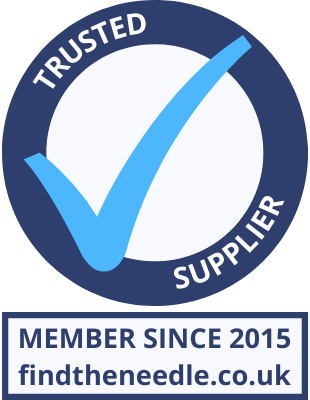 Add My Company
Add My Company
Sign In
All You Need To Know About Underfloor Safes
23-05-2018

What is an Underfloor Safe?
An underfloor safe is basically a steel box with a secure safe door at the top. The body itself offers limited protection, so it is encased in concrete to give it the required level of security.
Underfloor safes should not be confused with floorboard safes, which sit between the joists in the void between a floor and ceiling. These are little more than a tin box and are easy to remove, being only secured to joists. As such a floorboard safe is not suitable for insurance purposes.
For the most part, the door to the underground safe is round and as the quality of the safe improves, so does the door plate (the top part) becoming thicker and improving security. These round lids are approximately 140mm (5.5”) in diameter, which does not allow for large items to be stored.
The safe has a neck, coming up from the body and the door is lowered into the neck, securing the lid into the solid part of the safe.
Underfloor safes can be provided in the following qualities:
£4000 cash rating OR £40,000 for valuables
£6000 cash rating OR £60,000 for valuables
£10,000 cash rating OR £100,000 for valuables
£17,500 cash rating OR £175,000 for valuables
£35,000 cash rating OR £350,000 for valuables
Sapphire Underfloor Safe
Installing an Underfloor Safe
As the body of the safe must be sunk into concrete, on an existing solid floor, this would need to be excavated using a Jack Hammer, to a sufficient depth that the top opening sits flush with the floor level. A hole of approximately 500mm square (20”) is required and not all solid floors are suitable.
The concrete mix around the safe is not standard, given that it is part of the main protection for the safe. As such these safes should be fitted by a bona fide installer, who would ensure the concrete meets the requirements set out by the manufacturer. Failure to install the safe correctly could invalidate any insurance.
Where the floor for the safe to be installed is just floorboards over joists, if there is a sufficient void underneath, shuttering can be constructed to make a box, that the safe sits in, with concrete poured around it. It is also possible to construct an above ground box, using shuttering, to the same effect.
Safes of £10,000 cash rating and above also come with a steel mesh, which is placed into the concrete around the neck of the safe, to reinforce the floor, thereby improving its resistance to attack.
Where the floor for the safe to be installed is just floorboards over joists, if there is a sufficient void underneath, shuttering can be constructed to make a box that the safe sits in, with concrete poured around it. It is also possible, to construct an above ground box using shuttering to the same effect.
Domestic Undefloor Safe
Types of Underfloor Safe
The main point of entry for an underfloor safe is via the door (safe lid), which for most safes is a 14mm round diameter opening. In lower quality underfloor safes, it is possible to get a rectangular safe door, these for the most part, have not been as popular, as it is possible to get the lid jammed when removing or reinstalling them. Some manufacturers have overcome this, by having the lid hinge from one corner using a gas strut, the problem is that as the door cannot be fully removed, as it limits the clear access.
Deposit underfloor safes also provide a tube, through which a capsule can be dropped into the safe. These are mainly used in commercial businesses, where only authorized personnel can open the safe, but other staff can deposit cash, for example. These capsules are not particularly large, which limits their use.
Locking
A standard underfloor safe would be secured by a high-security double bitted key lock.
A mechanical combination lock can be fitted, but these are not easy to operate, especially when kneeling or laying down on the floor.
Digital locks can be provided and are battery operated. Note: If the safe is fitted in an area that is either cold or damp, this can affect battery quality.
Bulldog Underfloor Safe
Pro’s and Con’s of Installing an Underground Safe
Pro’s
Safe can be hidden in a place that may be difficult for others to find
Very difficult to attack or force open
Good level of physical security
Unlikely to be carried away
Con’s
Small aperture limits the size of items that can be placed within the safe
Physical safe size is limited
The safe lid is quite heavy
Whatever is put in the safe goes to the bottom, so a ‘hand and knee’s job required to access items
If installing in an existing solid floor, digging this out is very noisy and dusty
Deposit capsules are small
Rectangular doors can jam when being replaced, due to the uneven weight distribution of the door
Not ideal for storing items that can be affected by damp i.e. papers, leather watch straps etc.
Not recommended for areas prone to flooding, as the safe will fill with water
In the event of a fire where a hose has been used, the safe can flood
The main benefit of an underfloor safe is that it can be hidden away and unless you know where to look, is unlikely to be found.
Some people do not like the thought of having a large heavy looking safe sitting in their home, for anyone to see and are not put off by hiding a safe away under the floor, especially if it is not going to be used on a regular basis. While the door to the safe drops down into the neck to be secured, there is a dust cover at the top of the neck, which can easily be covered over with carpet or a rug to disguise its existence.
In some instances, we have made a small tray that takes the place of the dust cover, into which can be placed matching tiles, or timber boards, to disguise the safe in any existing flooring. The best time to consider installing such a safe would perhaps be when having an extension or new home built, as any builder can allow a large enough pocket to put such a safe, with the safe itself being installed at a later date.
When space is limited within a property to fit a freestanding safe, having one tucked under a floor, maybe the best alternative.
If you would like to discuss any aspects of installing an underfloor safe, please call Maurice Still on 0207 405 1540 or email maurice@independentsafes.co.uk
For more information on All You Need To Know About Underfloor Safes talk to Independent Safes
Enquire Now
List your company on FindTheNeedle.

